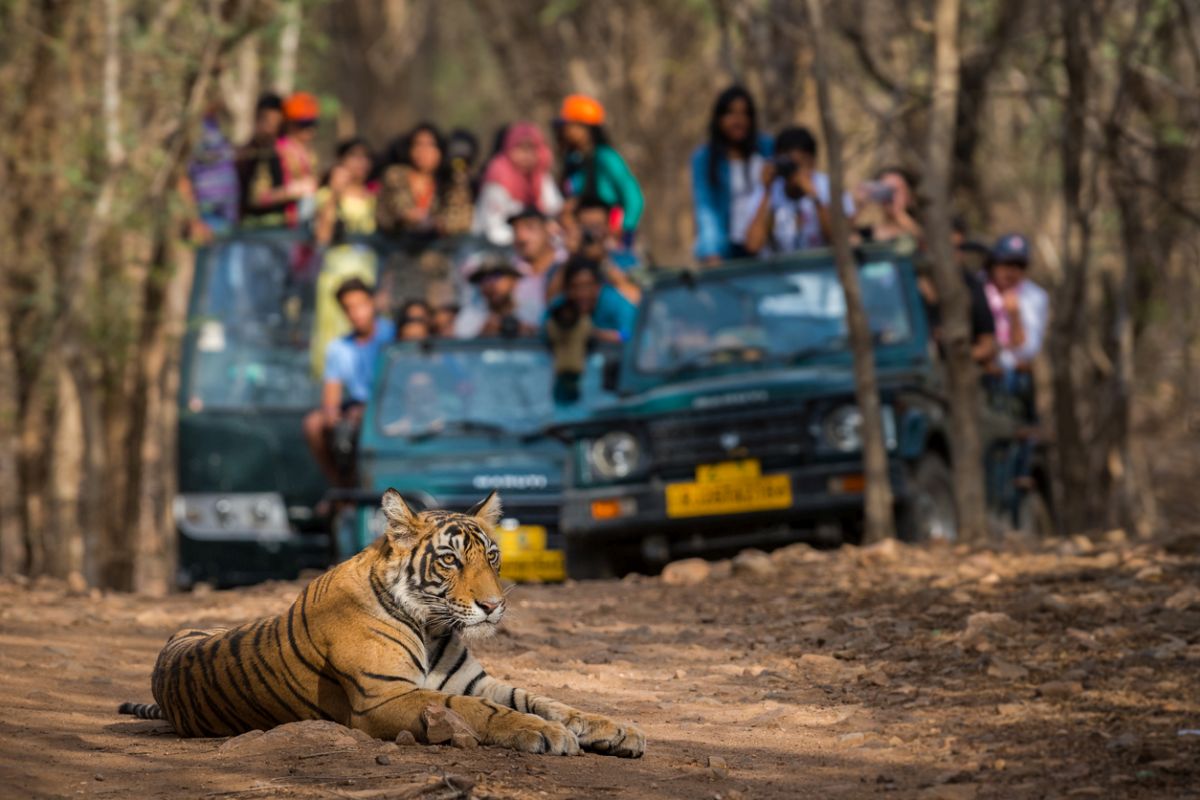The North Bengal Wild Animal Park (NBWAP), popularly known as the Bengal Safari, in Siliguri has witnessed a slight decline in the number of visitors in the 2019-20 financial year so far, thanks to the ‘economic slowdown,’ which officials at the Park attribute the downward trend to.
The Park had seen good footfall and a good rise in revenue collection ever since the safari began there in 2014, while new features like the toy train and Nature Interpretation Centre have been added recently. According to sources, the Park collected Rs 3,51,00,487, the highest recorded till date, from 2,91,999 visitors in the 2018-2019 financial year.
Advertisement
“This year, the growth is a bit muted, in comparison to the previous year where we had the highest footfall of 2,91,999,” the Director of the NBWAP, Rajendra Jakhar, said. Sources said that the overall economic slowdown in the country may have had an effect on the footfall at the Park after May 2019.
“This being discretionary expenditure and not essential expenditure, the result of the slowdown in economic growth has been reflected in the footfall figures. Even in Darjeeling, we have seen a drop of 3-5 percent in the tourist footfall,” a source at the Park said.
According to sources, there were 82,523 visitors and the revenue earned stood at Rs 7,75,090 for the period between January and February (3 months) in the 2015-2016 financial year. The peak month for footfall was recorded in February (49,332), and the lowest footfall witnessed in March (13276) then.
For the next period between April and March (12 months) in 2016-2017, the total number of visitors was 1,43,279 and the revenue earned was Rs 61,96,016. The peak footfall was recorded in January (29,356) and the lowest footfall in September (4282). For the period of April to March (12 months) in the 2017-2018 financial year, the total number of visitors was 2,51,925 and the revenue earned was Rs 1,81,48,276.
The peak month then was June (34,726) and the lowest footfall was recorded in August (10,283).The peak month for footfall for the 2018-19 fiscal was June (35,806) and the lowest recorded footfall was September (12,006). Records at the Park for April to December 2019 (9 months) for the 2019-2020 fiscal, the total number of visitors was 1,74,618 and the revenue earned was Rs 2,40,00,960.
The peak month for footfall was December (31,531) and the lowest recorded footfall was September (8762). “The leopard, Sachin, had escaped on 1 January last year, so we had to keep our Park closed for three days,” explained Mr Jakhar. According to him, the path is, however, still on the growth trajectory.
“This year, we are likely to get more than 3.5 crores in revenue, which more or less equals our operational expenses. The revenue is likely to increase as we gain more popularity through the introduction of new features we will be installing in the park,” he said.
“The Park is an emerging tourist destination with unlimited potential since it covers almost 300 hectares, which is one of a very few in India,” Mr Jakhar said. The park, which is spread across 297 hectares, offers mixed herbivore safari, tiger safari, Asiatic black bear safari, elephant safari, leopard safari, aviary trail, lesser cats trail and trail at the gharial and crocodile pond.











